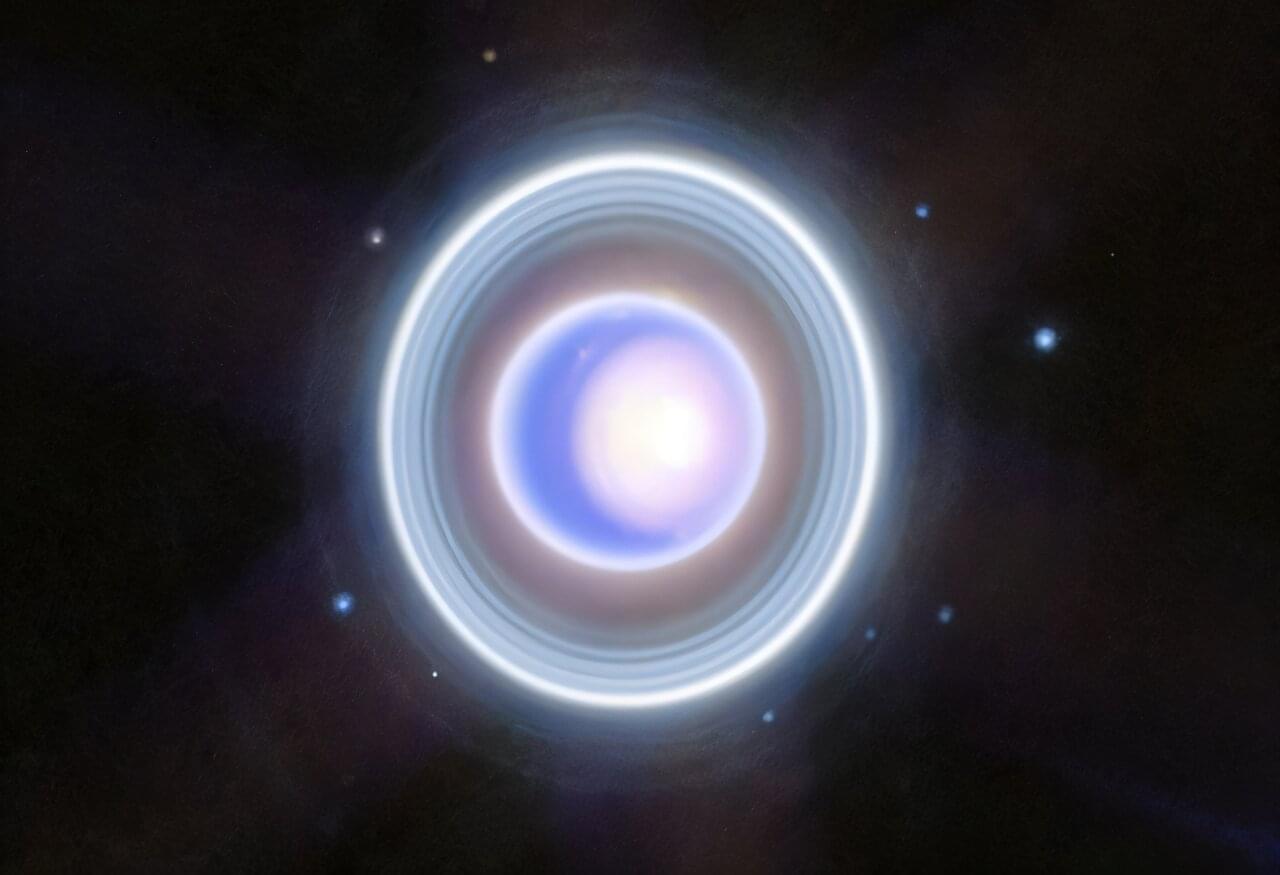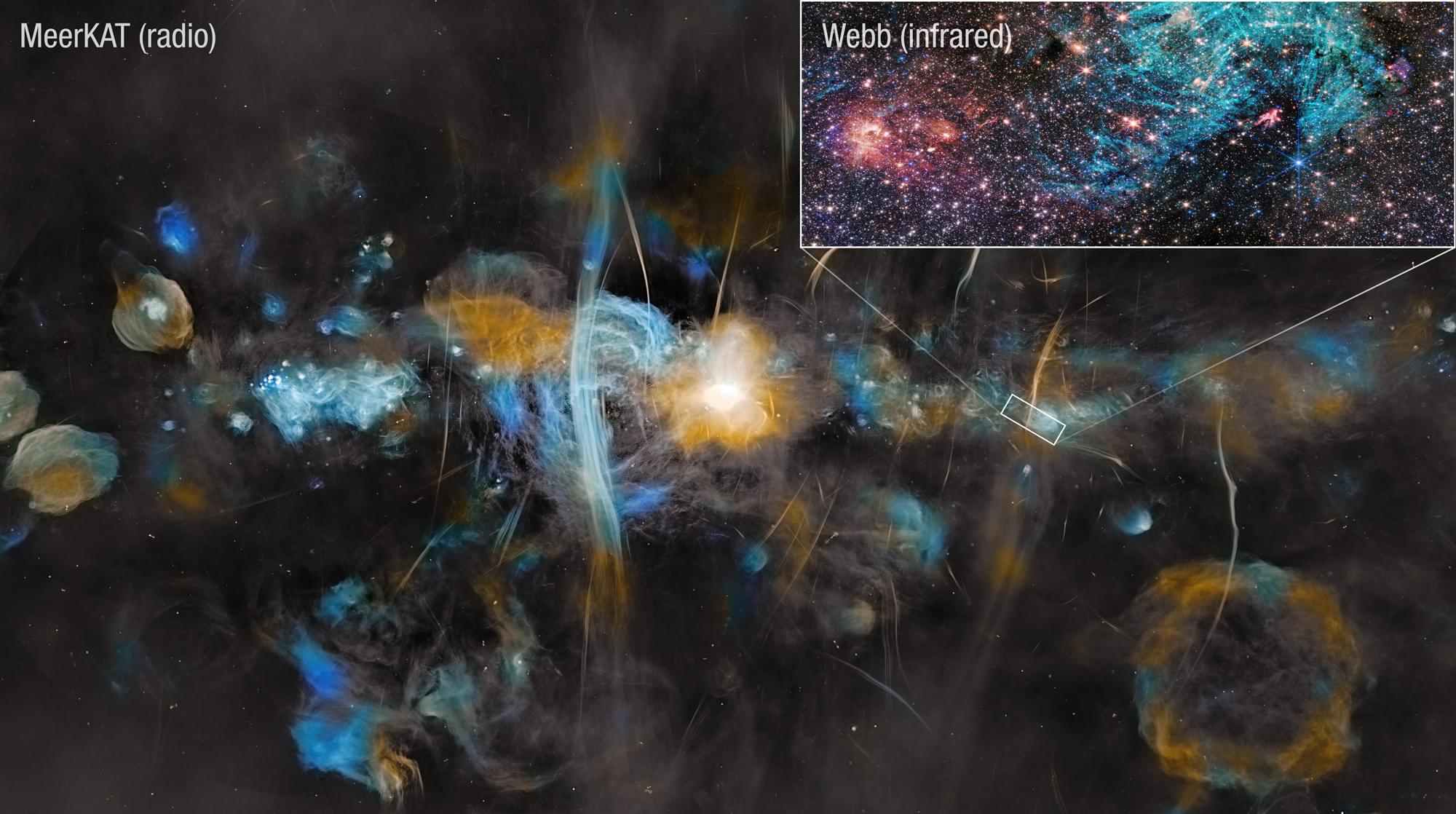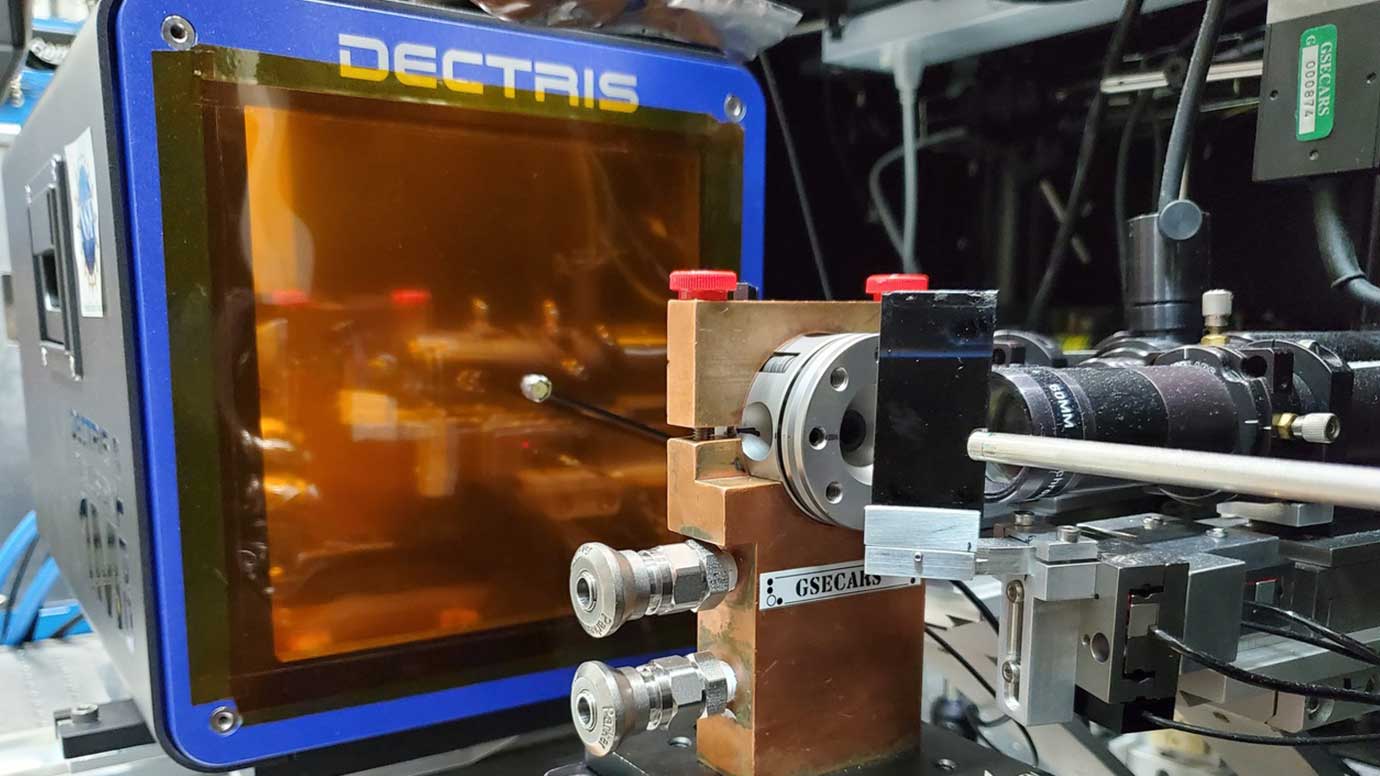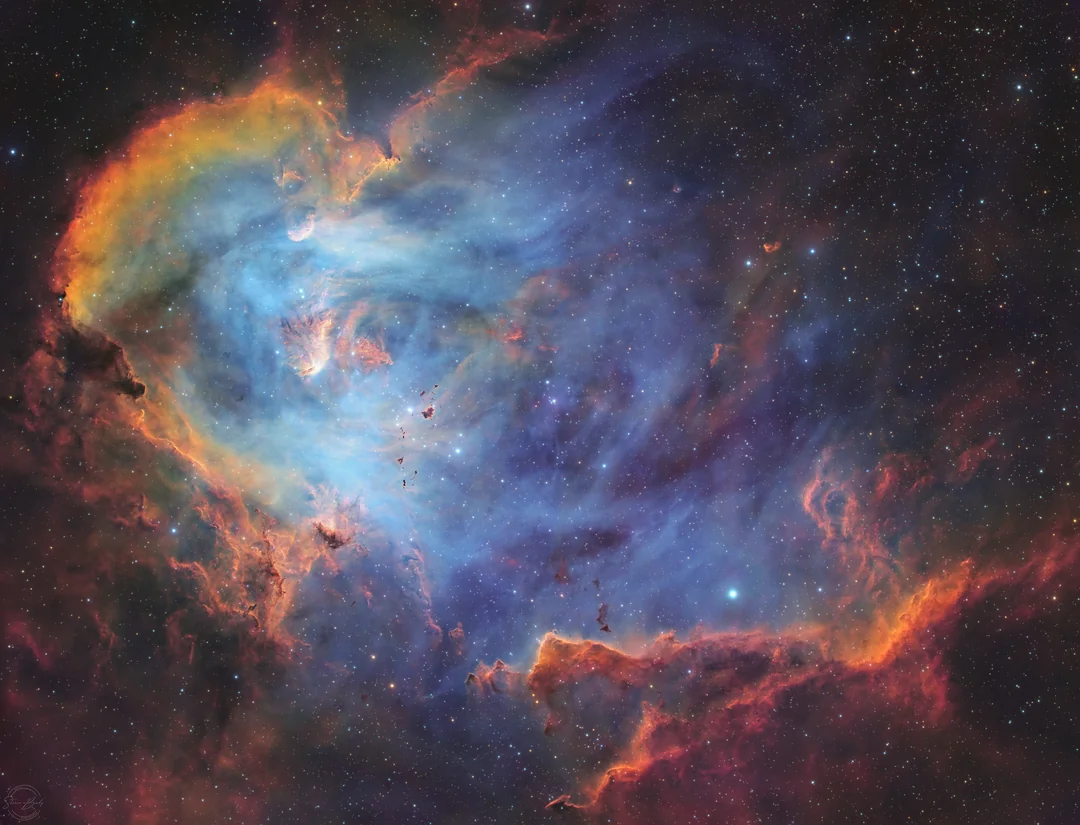A new kind of microscope called ELVIS is heading to the International Space Station to change how we study life in space. By creating stunning 3D holograms of cells, it allows scientists to observe how organisms adapt to microgravity and other extreme conditions. This could help us understand whe
Category: space – Page 91

Planetary alignment provides NASA rare opportunity to study Uranus
When a planet’s orbit brings it between Earth and a distant star, it’s more than just a cosmic game of hide and seek. It’s an opportunity for NASA to improve its understanding of that planet’s atmosphere and rings. Planetary scientists call it a stellar occultation and that’s exactly what happened with Uranus on April 7.
Observing the alignment allows NASA scientists to measure the temperatures and composition of Uranus’s stratosphere—the middle layer of a planet’s atmosphere—and determine how it has changed over the last 30 years since Uranus’s last significant occultation.
“Uranus passed in front of a star that is about 400 light years from Earth,” said William Saunders, planetary scientist at NASA’s Langley Research Center in Hampton, Virginia, and science principal investigator and analysis lead, for what NASA’s team calls the Uranus Stellar Occultation Campaign 2025.
Anand Prasad — Minimal Phenomenal Experience (MPE) and the Nature of Subjectivity and Time
In the context of minimal phenomenal experience (MPE), the prevailing assumption is that subjectivity is entirely absent in pure awareness. This conclusion is based on the dissolution of specific properties of subjectivity, such as the first-person perspective and self-localization in space. However, while these properties are integral to subjectivity, their absence does not negate the existence of subjectivity itself. Some individuals report experiencing a bare witness or a sense of presence that might be a default property of consciousness, with other properties(FPP) being content-induced.
Similarly, MPE is often considered timeless due to the lack of change(zero content). We propose that the very persistence of awareness—being aware of itself as the only content—could serve as a rudimentary marker for the passage of time. Imagine an opera singer holding a note: while there’s no pitch change, the experience of the sustained note creates persistence of same experience and duration. Likewise, the persistence of awareness in MPE might provide a minimal sense of time.

Webb explores effect of strong magnetic fields on star formation
Follow-up research on a 2023 image of the Sagittarius C stellar nursery in the heart of our Milky Way galaxy, captured by NASA’s James Webb Space Telescope, has revealed ejections from still-forming protostars and insights into the impact of strong magnetic fields on interstellar gas and the life cycle of stars.
“A big question in the Central Molecular Zone of our galaxy has been, if there is so much dense gas and cosmic dust here, and we know that stars form in such clouds, why are so few stars born here?” said astrophysicist John Bally of the University of Colorado Boulder, one of the principal investigators. “Now, for the first time, we are seeing directly that strong magnetic fields may play an important role in suppressing star formation, even at small scales.”
Detailed study of stars in this crowded, dusty region has been limited, but Webb’s advanced near-infrared instruments have allowed astronomers to see through the clouds to study young stars like never before.

Rethinking neutron star mergers: Study explores the effects of magnetic fields on their oscillating frequencies
Neutron star mergers are collisions between neutron stars, the collapsed cores of what were once massive supergiant stars. These mergers are known to generate gravitational waves, energy-carrying waves propagating through a gravitational field, which emerge from the acceleration or disturbance of a massive body.
Collisions between neutron stars have been the topic of many theoretical physics studies, as a deeper understanding of these events could yield interesting insights into how matter behaves at extreme densities. The behavior of matter at extremely high densities is currently described by a theoretical framework known as the equation of state (EoS).
Recent astrophysics research has explored the possibility that EoS features, such as phase transitions or a quark-hadron crossover, could be inferred from the gravitational wave spectrum observed after neuron stars have merged. However, most of these theoretical works did not consider the effects of magnetic fields on this spectrum.
Former Google CEO: “China Will Win AI Race Unless We Act Now” | Founder Psychology, Talent Wars, AI
From the gritty realities of founding an AI startup to the global AI race and the future of superhuman intelligence, Eric Schmidt, former Google CEO and current CEO of Relativity Space shares hard truths, leadership insights, and a bold vision for AI’s next frontier. Will the US reclaim the lead, or is China set to dominate?
Timestamps:
0:00 Intro.
1:36 Eric Schmidt Introduces himself.
2:06 The Founder’s Journey: Joining Early Stage Company vs. Founding.
4:20 Why Sometimes Is It Better to Join NOT as a Founder?

Scientists find strange black ‘superionic ice’ that could exist inside other planets
Everyone knows about ice, liquid and vapor—but, depending on the conditions, water can actually form more than a dozen different structures. Scientists have now added a new phase to the list: superionic ice.
This type of ice forms at extremely high temperatures and pressures, such as those deep inside planets like Neptune and Uranus. Previously, superionic ice had only been glimpsed in a brief instant as scientists sent a shockwave through a droplet of water, but in a new study published in Nature Physics, scientists found a way to reliably create, sustain, and examine the ice.
“It was a surprise—everyone thought this phase wouldn’t appear until you are at much higher pressures than where we first find it,” said study co-author Vitali Prakapenka, a University of Chicago research professor and beamline scientist at the Advanced Photon Source at Argonne National Laboratory. “But we were able to very accurately map the properties of this new ice, which constitutes a new phase of matter, thanks to several powerful tools.”


Magnetic Fields Can Map the Universe
Who knew that magnetic fields could be so useful?
Astronomers are able to use magnetic fields to map our environment within the Milky Way using a technique called Faraday rotation.
It works like this. There’s a bunch of dust – literal dust grains – floating within the galaxy.
